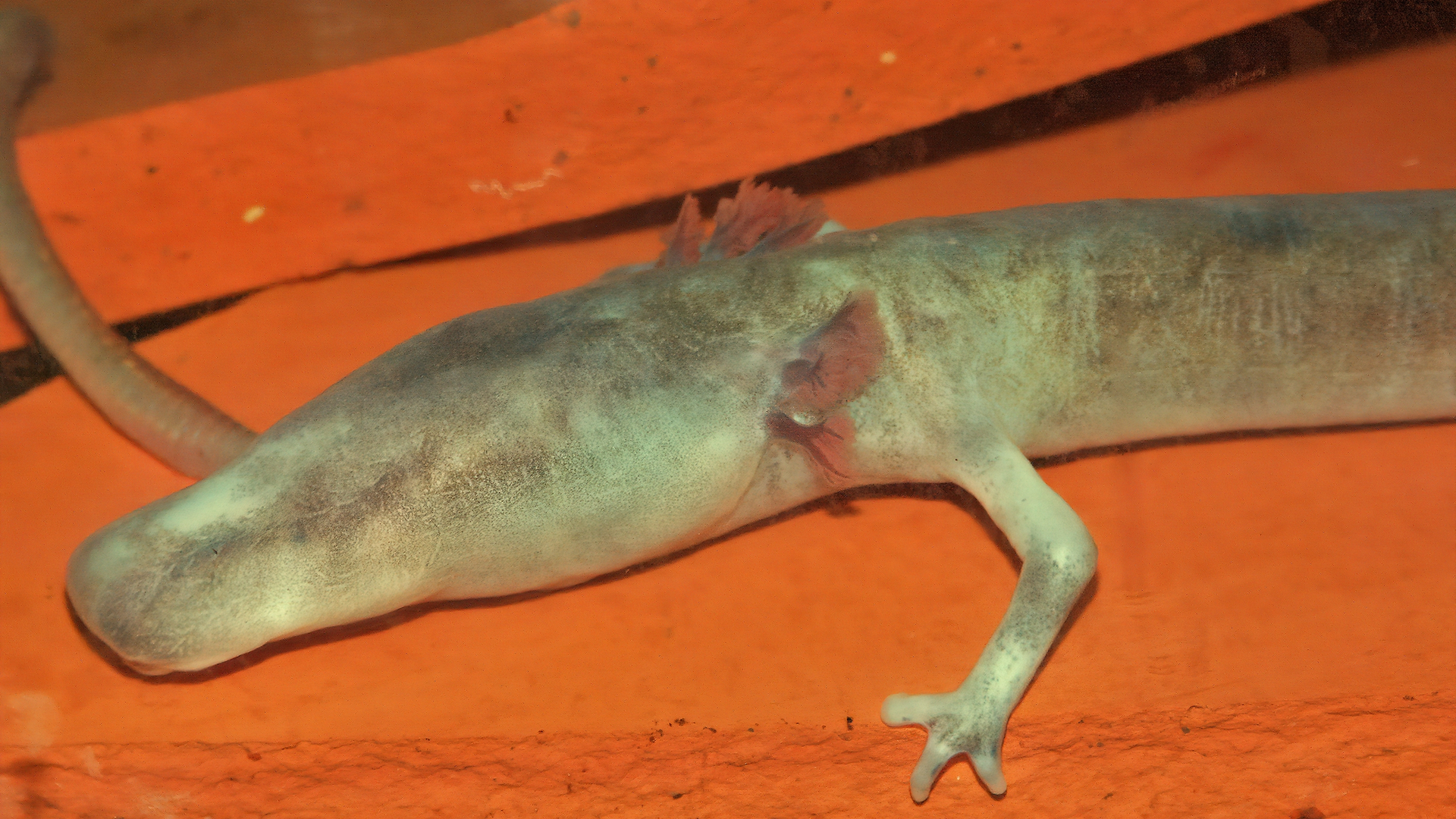When Johann Weikhard von Valvasor first described an olm in 1689, the famed Slovenian polymath believed he’d laid eyes on a baby dragon. After all, local folklore explained that ferocious dragons dwelled beneath the planet’s crust and these strange pale creatures seemed to magically emerge from Earth’s surface during heavy rains.
While their mythical prowess may have been a tad overstated, these bizarre little beasts are still incredibly fascinating and unique.
The olm (Proteus anguinus) is an aquatic salamander that can only be found in the Balkans, namely the underground cave systems of the Adriatic coast in northeastern Italy, Slovenia, Croatia, Bosnia and Herzegovina, and northern parts of Montenegro.
Measuring around 20 centimeters (7.8 inches) from tail to snoot, they look a bit like a pale pink snake with a spindly set of arms and legs. Their ghostly complexion is a consequence of spending their lives in pitch-black caves where pigmentation would go unnoticed. However, their skin retains the ability to produce melanin and can turn dark if they are exposed to light.
Owing to this life of darkness, the eyes of the olm are underdeveloped, covered in skin, and effectively blind. Their eyes even appear in Charles Darwin’s seminal book On the Origin of Species – a major PR boost for the little-known species – as an example of an animal losing a physical feature due to disuse. However, they do appear to have some working photoreceptors as they swim in the opposite direction into the light.

“Alright, Mr DeMille, I’m ready for my close-up.”
Image credit: Wirestock Creators/Shutterstock.com
To make up for this extremely poor eyesight, olms have a sharp sense of smell and hearing. They are armed with highly sensitive chemoreceptors that they use to pick up extremely low concentrations of organic material in the water. They use this sense to sniff out prey such as larvae, shrimp, bugs, and small snails. If no food is about, however, it’s not a big deal since they can go with a meal for years.
Another weapon in their sensory arsenal is an ampullary organ that can detect electric fields for the purpose of navigating lightless caves.
Since they have no natural predators, they manage to maintain an unbelievably lazy way of life. In 2020, scientists tagged and monitored 26 olms living in a cave in Bosnia and Herzegovina and found they only moved around 5 meters (16 feet) in a year on average. In one case, they found an olm that did not move an inch in 2,569 days – that’s seven years.
This relaxed lifestyle pays off, though. Olm can live for up to 100 years with the average adult reaching 68.5 years of age. While studying this remarkable longevity, scientists discovered the species possesses a number of “usual genes associated with increases in lifespan”.
On the Tree of Life, olms belong on an isolated twig. Olms diverged from all other amphibians almost 110 million years ago and are the only living species in the genus Proteus, but are related to other salamanders found across the world.
One of their closest relatives is the axolotl, a smiley-faced salamander that lives exclusively in Mexico’s Lake Xochimilco. Like axolotl, olm are an example of neoteny, the retention of juvenile features in the adult animal. The most obvious of these baby-like features is their external gills which sit at the back of the head in two tufts.
Unfortunately, olms face a number of existential threats. According to the IUCN Red List, the species is considered vulnerable to extinction and their populations are shrinking. The trouble faced by this unique fella is primarily the result of pollution, disruption to their fragmented habitat, and other human-drive changes.
Source Link: Olms Are Cave-Dwelling "Baby Dragons" Of The Balkans